Your cart is currently empty!
 PSVR Games‘ alt=’PSVR Games’ id=’templ_icon_89′ width=’40’ height=’40’ /> Hub Category:
PSVR Games‘ alt=’PSVR Games’ id=’templ_icon_89′ width=’40’ height=’40’ /> Hub Category:  PSVR Games
PSVR Games
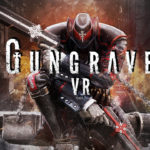
Gungrave VR: Loaded Coffin Edition
Developer / Publisher – IGGYMOB / XSEED Games
Price – US $39.99 / EU €39.99 / UK £29.99 / AU $59.95
Release date – December 07, 2018
Control Method – DS4
Pro Patch – Yes
Digital only – No
Reviewed on – PSVR/PS4 ProI admittedly knew nothing about Gungrave prior to the VR announcement earlier this year. A trailer during E3 showed some brief footage that definitely left me underwhelmed but soon after praise for the original PS2 game showed up, so I was willing to give the VR version of this game the benefit of the doubt. For those that don’t know, Gungrave is a mixture of 3rd and 1st person shooter action and with the complete VR package you also get some side-scrolling shooter bits as well making for a broad range of shooting types.
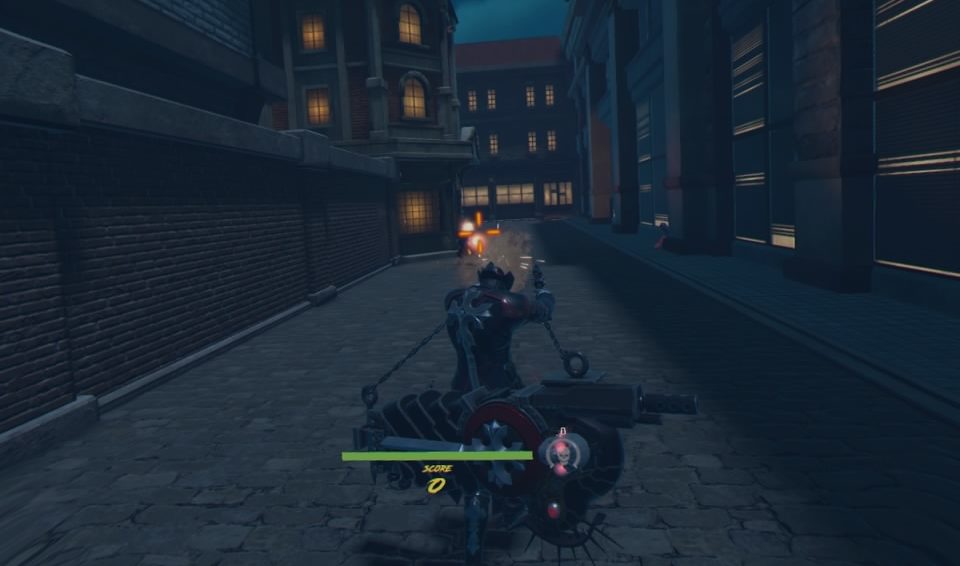
Shoot lots of stuff!!! Despite the variety of the shooting mechanics, the DS4 is the only controller supported. A few of your powers carry over from mode to mode but the bottom line here is to shoot everything. The 3rd -person action lets you run and jump around the play area while shooting at whatever you can though unfortunately, this mode only includes click-turning which makes the combat seem somewhat unfair. The first-person action turns this into a stationary wave shooter, though one stage allows you to move up or down and left or right while flying on a hoverbike(?). The last mode, available in the UN content, is the side-scrolling action which plays like Contra only where you aim is determined by the angle of your headset. It’s a dual-wielding affair though your guns are only mapped to a single shooting button, so the dual wielding is cosmetic only. Your guns overheat so you need intermittently cool them off with a press of a button. There is also a slow-mode which lets you move things at a crawl for a few seconds and a special mode which gives you a more powerful gun to unleash hell for a few seconds. No matter which mode of play you happen to stumble upon, the name of the game never changes. Shoot everything until its dead.

Take to the skies to defeat all these bad guys! Gungrave looks pretty good in VR at 1st glance. The levels are crisp, and the character models are fairly detailed though this is only readily apparent when enemies are up close, which is typically not a good situation to be in. Many of the stages are very small/short in the base game, which is probably the trade-off for the crisp visuals. Enemies look good, though many suffer from a lack of animations often repeating the same few movements or turning 90 degrees without any animation. Explosions and other environmental items pepper some areas though are once again plagued by limited animations when they are destroyed and the overall sense of the gam. I get from the visuals is that this is a 15-year-old game ported to VR without much in the way of modern-day enhancements. The scale of some of the bosses is pretty impressive and the 1st person levels do bring the action closer, though that comes with many restrictions. Gun animations are jerky in any mode and the 1st person stages do feature some very obvious 2D backgrounds that do detract from their respective stages. Still, when it’s all said and done, I thought the game looked alright.
On the audio side we get a whole whack of gun sounds and some other effects that match the action. The music is an odd mixing of light jazz(?) that does fit the over-the-top cartoonish action. Your assistant helps you out when needed during the campaign filling in some gaps in the story and basically explaining who you need to kill next. Bottom line is the sound here is simplistic, but it works.
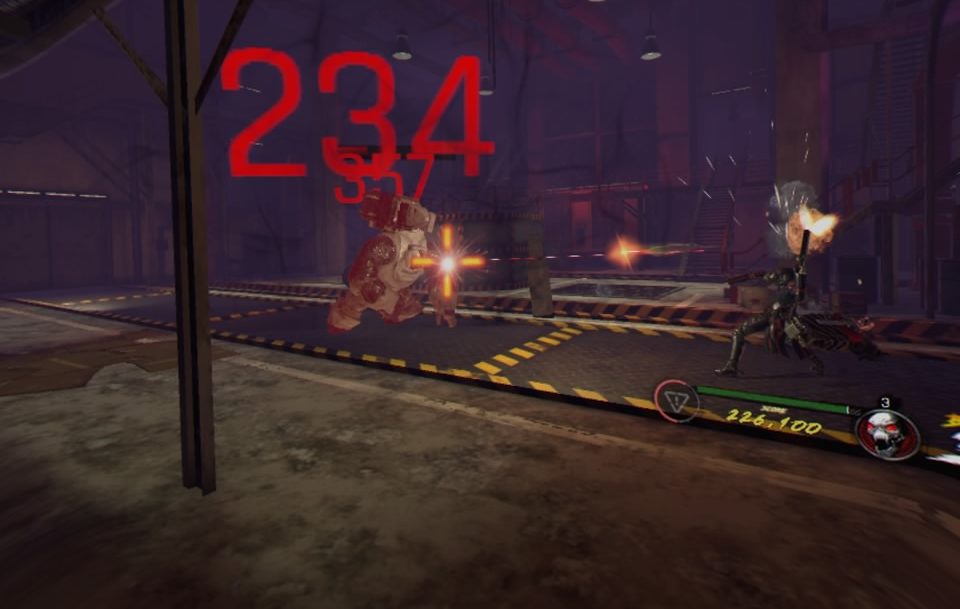
The UN content gives you some 3D side-scrolling action! With the good out of the way, I have a few issues to bring up. Some of the stages are so short it’s laughable…visit one area, kill some peons, fight a boss and done. The story is nothing more then a blurb giving you an excuse to kill everything in sight. All the aiming is done by head tracking, which is fine but with the only option for turning being of the click variety, it can be ridiculously hard to stay locked on enemies while you move around the game space. Boss fights carry on way to long to the point where I think this was intentionally done just to extend the relatively short game time as the base game took me less then an hour and half to beat and the UN content only adding around 45 minutes more making the entirety of the experience lasting right around the 2-hour mark. Harder difficulties are available for repeat plays so if you want to challenge yourself and dig the mindless action presented there is a reason to come back. Additional skins are also available though it seems to be limited to only one option which requires you to get an ‘SS’ ranking on all the stages. The UN content felt a little more cohesive and includes the sidescrolling bits which reminded me a fair bit on Contra but really just consists of looking around to aim your gun and unleashing all hell. There is also a lot of looking around which is fine, but the final boss forces you to almost constantly look up and then look up even higher during specific attacks causing a lot neck discomfort. Lastly would be the repetitious nature of it all as even when your viewing angle changes, the action still feels so very redundant.

The final boss battle goes on waaaay to long. Gungrave’s port to VR left me feeling wanting and in truth, many of the mistakes it makes are some that were made back when this generation of VR first launched. Had this come out at PSVR’s launch, I could be a little more forgiving of its shortcomings as there are some bouts of fun to be had here. That said, we have been treated to so many better titles across similar genres that Gungrave just feels like it doesn’t belong. The mechanics bely the games age and by the time I finished all the games content, I was glad it was over.
What would I pay? The complete package is $40 which is nuts. If this were half that price, I’d still be hard pressed to recommend this except maybe for fans of this game from yesteryear. I had a few moments of fun, and the boss battles were a highlight, but the action is just to mindless to entertain me for anything more then a few moments.
XSEED provided The VR Grid with a code for this title and, regardless of this review, we thank them for that!

Red Matter
Developer / Publisher – Vertical Robot
Price – US $29.99 / EU €29.99 / UK £24.99 / AU $44.95
Release date – December 07, 2018
Control Method – Motion Controllers
Pro Patch – Yes
Digital only – Yes
Reviewed on – PSVR/PS4 ProRed Matter is a game unto itself with you being tasked with investigating a space station on a moon orbiting an unknown planet. Something has gone awry and it’s up to you, as an enemy spy, to get in maybe find out what happened and get the heck out. At first glance it may look like a shooter, but Red Matter is in fact a first-person puzzler with you traversing the station trying to unlock the path to the next goal.

It’s kinda cool translating all these Russian texts. Motion controls are your only option here and thanks to some comfort options, you can you can walk or teleport around the base. As of this review you can only click-turn which is unfortunate though the the developers have stated that a smooth turning option is on the horizon, possibly by the games North American launch. This controls like a typical FPS with each arm equipped with a multi-tool. The 2 tools you will use the most are the grabber arms that allow you grasp objects, levers and buttons and the other is your information tablet, which when pointed at something will give a brief description of what it is, the 3rd is a flashlight which I only used a few times throughout the game. Everything in the station is in Russian so to translate these messages you simply need to point the laser attached to your scanner thingy and ‘BOOM!’ instant translation. The bulk of the game takes place inside that seemingly abandoned station with you traversing its halls and corridors. The core of this game is puzzle solving with each new room you enter offering some type of dilemma that you need to solve or bypass. A lot of these puzzles involve levers, buttons and circuit systems but all them require you to pay attention. Clues may be written on a wall or note or may just be indicated by a blinking light so no matter where you are, you need to be aware of your surroundings.
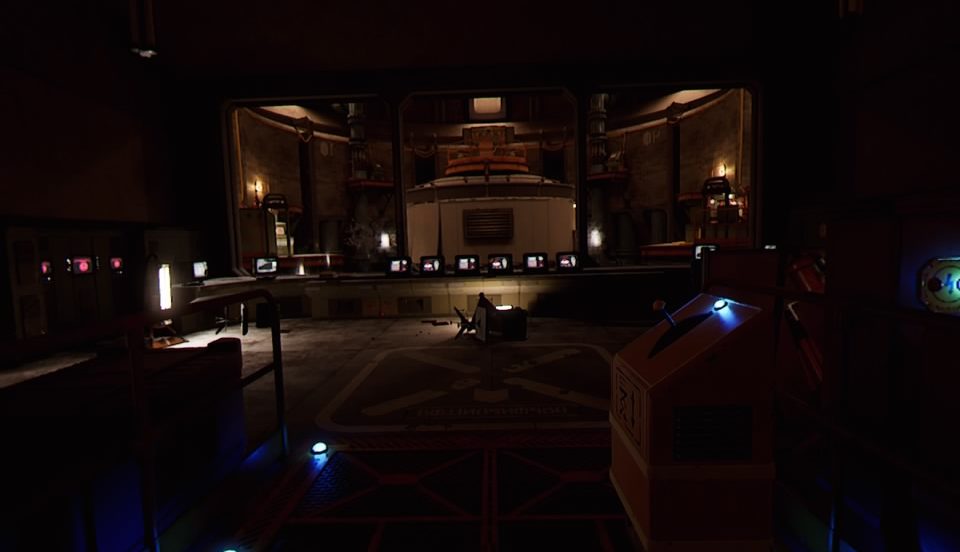
The set pieces here are fantastic. I’ll get back to the puzzles, but I think special praise needs to be given on the visual side of things here. Red Matter is one of the best-looking games to grace our headsets. Unlike many games which take place in the same setting for most of the game, Red Matter manages to keep the setting fresh from beginning all the way to the end. The stages are littered with 50’s style details giving this station a wonderful sense of authenticity and mystery as you investigate every corner. Rooms contain tons of items from the occupants of the station and whether you’re in the crew quarters, security station of reactor station, all of these settings completely immerse you in the world. Special note should be taken on the lighting effects which, as far as PSVR games go, are the best use of lighting and reflections I have ever seen in a game. Whenever you scan something with your little device, it locks on via laser, which often times is reflected on a nearby surface and looks absolutely amazing. When the light is reflected off whatever surface it’s hitting, you can see the scratches, divots and imperfections in that reflected material doing absolute wonders for immersion. In fact, even getting close to any surface reveals a level of detail I can’t recall ever seeing before in VR. I could gush all day about the look of this game, but take my word for it when I say, you’ll be impressed.
Sound design is also very good with a fully acted out campaign giving us a complicated but contained narrative that had me feeling like I was the main character in a surreal movie. You are in near constant contact with your supervisor who guides you throughout the station and updates your objectives. There is some music in here as well, though it’s atmospheric, often disappearing in the background, but still adding to the mood of the situation you may have found yourself in.
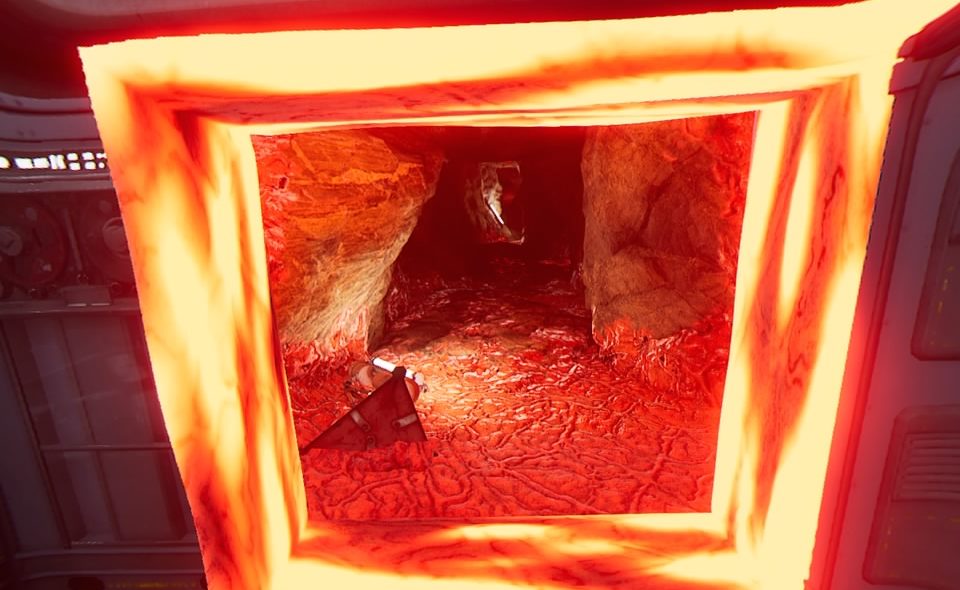
The game gets surreal. What Red Matter does right, besides the stellar presentation, is the puzzles. While a couple base mechanics do repeat themselves, each puzzle is inherently different from the last making each one not only feel fresh, but tasks you with really taking in your surroundings, giving you an appreciation not just for the game, but the seamless way many of these puzzles just naturally fit with the world you are in. The whole game feels organic and while maybe one or 2 puzzles do feel slightly contrived, for the most part they are great, putting this in the same league as Transpose, Statik and I Expect You to Die as being the one of the most fun and engaging puzzlers only available in VR. My only real issue with the game is the movement system in place which is…slow. Even teleporting consists of a jump in next to zero gravity making the pace at which you move, regardless of whether you walk or jump, just seem too plodding. Hitting stairs also seems to trip up smooth movement making it even slower and I ended up defaulting to the jump movement whenever I saw I had to navigate up stairs. In all honesty though, it’s a minor complaint in the grand scheme of things as it barely impacted my enjoyment of the game.
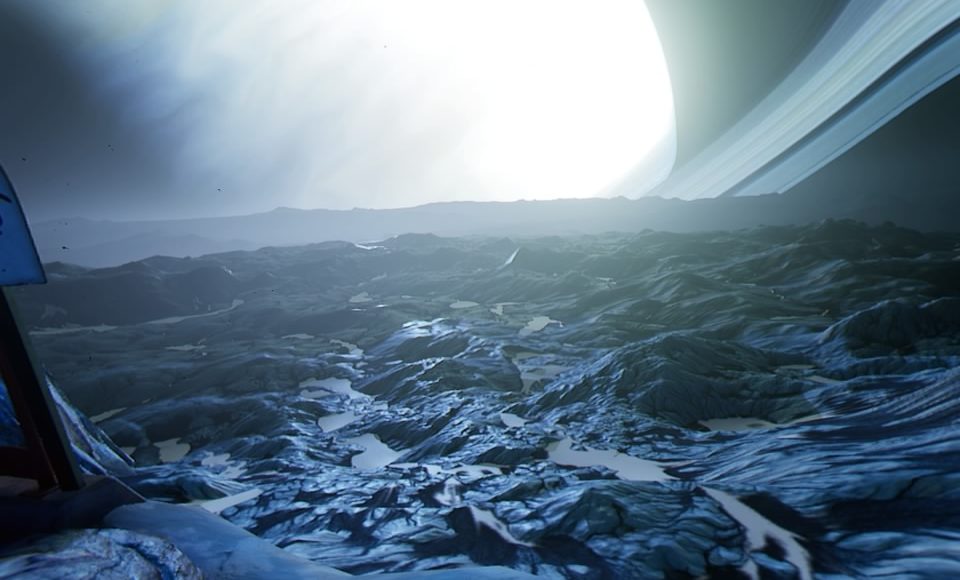
This looks soooooooo good in the headset. Red Matter took me around 3 hours to beat and I did miss 1 or 2 items to “complete” the game, though looking for those won’t take too much longer to find. The story is a closed one, which I also appreciated as it was nice to just have a beginning, middle and end without worrying about sequels or back story or any fluff. I absolutely loved the way the story unfolded and from start to finish I enjoyed almost every moment in the game. If you are into puzzles, top notch VR visuals, an engrossing story and an immersive world then you owe it to yourself to pick this up…it’s great!
What would I pay? $30 is a perfect price-point. The 3-hour campaign engrossed me from start to finish and when things get unnerving, you still can’t take your eyes away. I cherished every moment in the game and I wish there was more, not because it’s short, but because the devs nailed the game and I would like too see what else they have up their sleeves!
Vertical Robot provided The VR Grid with a code for this title and, regardless of this review, we thank them for that!

Prison Boss
Publisher – Trebuchet
Price – US $14.99 / EU €14.99 / UK £11.99 / AU $19.95
Release date – December 04, 2018
Control Method – Motion Controllers
Pro Patch – No
Digital only – Yes
Reviewed on – PSVR/PS4 Pro
The Job Simulation genre has become somewhat of a staple in VR with a few games offering comical representations of their real-world counterparts. Whether it be as a line cook, car mechanic or surgeon, more often then not these games tend so succeed based largely upon their simplicity and parody of whatever it is they are paying homage too. Prison Boss is the latest in that line of games, though this time it’s not a job per se, but rather as a felon. You are in jail for an unknown reason and are tasked with making it through the system while crafting and trading goods, slowly climbing your way to the top of the food chain and becoming…you guessed it, The Prison Boss!
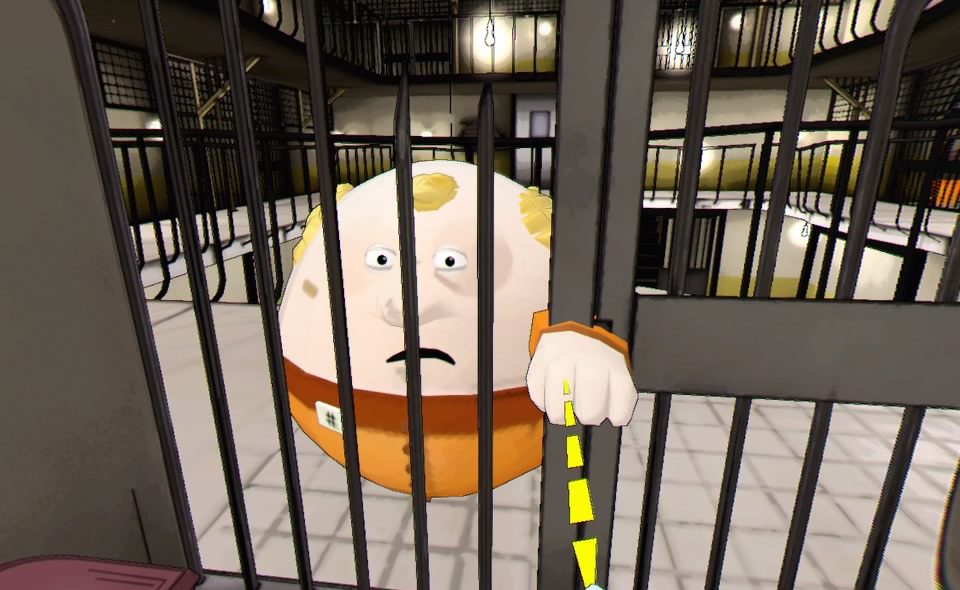
This guy is your bro! As this is a simulator, you need some Motion controllers here which will be needed to grab items and perform some more intricate tasks. There are 11 items in total to create and each requires certain base materials and specific motions and actions to create them. You basically only need a few buttons, which are needed to grab stuff, move your thumbs and turn. To create items to sell in prison, you need to purchase the base materials from a guy that visits your cell every morning. This guy also gives you missions, which boils down to creating ‘x’ number of items. Complete enough jobs and you are tasked with a last one requiring you to make the stuff needed to escape your cell. To make a cigarette for instant, you need to tear a piece of paper in 2, sprinkle tobacco on it, pick it up in both hands and roll it by pressing the Move button and finishing it off with a lick by bringing it to your face. To write a ‘naughty’ letter you need a pencil and paper and you need to scribble away. Making Rope requires you to grab a cloth and roll your hands until it makes rope. You can only craft at night and the clock on the wall does count down to morning though should you finish or exhaust your supplies, you can end the night (or day) at anytime you want. The catch here is that guards patrol the prison and if they walk past your cell and see any contraband, then you lose whatever you didn’t have hidden and that night ends. Completing tasks gets you more supplies and money and unlocks items for your cell. Some of these are just for aesthetics but many others offer more means to make more stuff and storage space, which will be desperately needed later in each prison when you have a ton of materials lying around and need to hide all that sweet contraband before the guard show up.
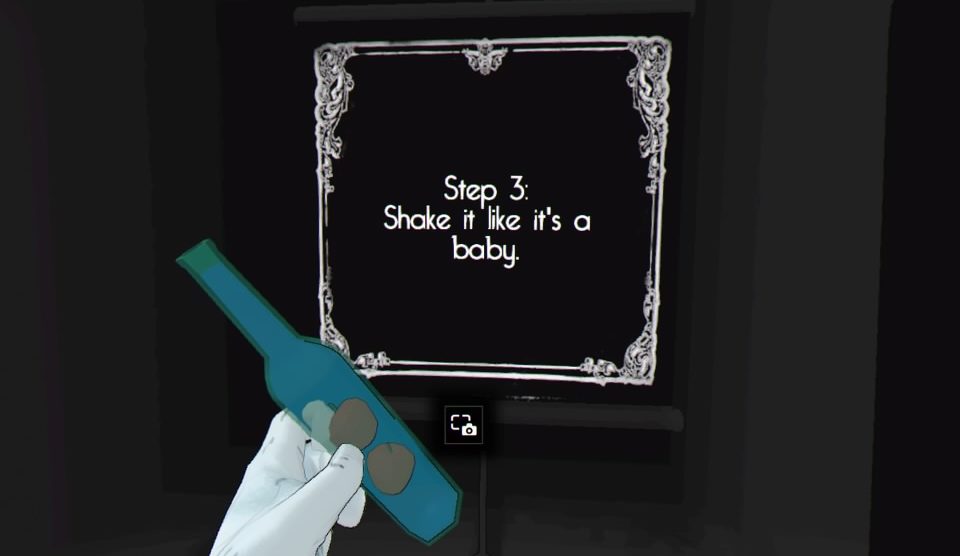
I chuckled Like many casual sim games, Prison boss opts for a very light-hearted and cartoonish art style, all put together with a cell-shaded coat of pain. Other characters are all egg shaped with items and objects looking typically comical. The presentation is also along those same lines with the opening videos explaining exactly what is contraband and then not only explaining how to make it, but having you make it as well just so you what not to do in prison. You are a prisoner and as such, your cell is home so get used to it! There are 4 different prisons in the game with each having a different, yet familiar look for anyone who’s ever seen jail on TV before. Guards survey the cells and you can hear them getting closer and closer or see the beam of light as they walk close to your cell and overall, I thought the Prison Boss looked pretty slick, if not a bit simplistic. As far as the audio goes it’s mostly some smooth jazz music which did fit the action oddly enough and some scattered sound effects that get the job done so no real complaints there either.

The prison may change, but the goals remain the same! Typical of the genre is the reliance on repetition and Prison Boss fits right in with statement. With apparently 80 different tasks to achieve over the course of the 4 stages and only 11 items to make, you’ll be performing the same actions again and again with increased time restraints and more intrusive guards. This is not inherently a bad thing as the challenge of creating all this stuff is the crux of the game, I just got bored on the gameplay despite that challenge. Take a job, buy and sell what you need, go to night, then mad scramble to make as much as you can, keeping an eye on the guards. When they get to close, hide everything, wait until they walk by, then pull out your stuff and keep crafting! Don’t get me wrong, I enjoyed my initial hour or 2 in the game and to complete all the objectives, you are probably looking at double that time to finish the game, but i felt the charm left the game after I finished the 2nd prison. I think in this regard; Prison Boss is best played in smaller doses.
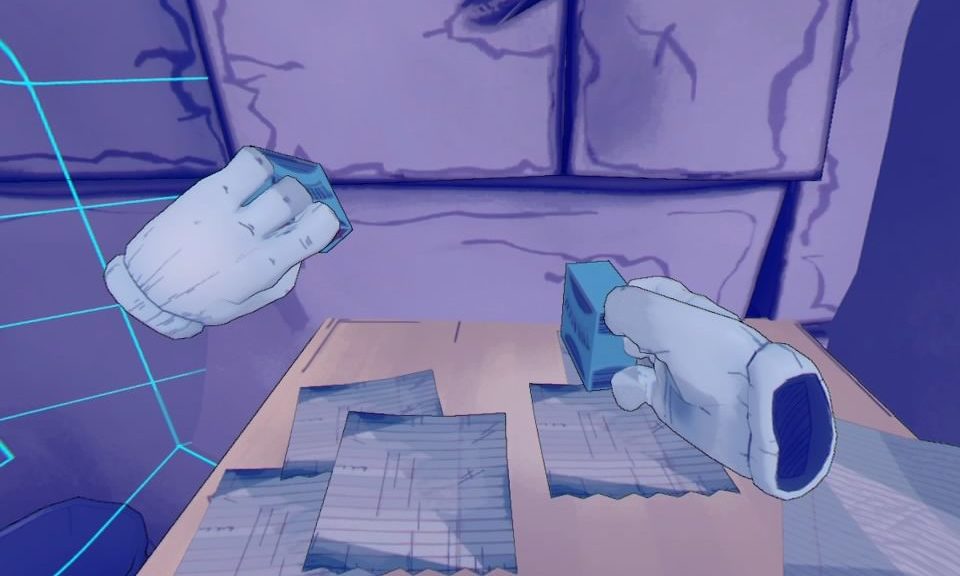
When the night comes…you better hustle! I fully admit to not being the biggest fan of these types of games but do appreciate their broad appeal. Job Simulator is held in very high regard and is a game I will never go back too. Prison Boss is on those same lines and if the idea of crafting and trading contraband in a cartoon prison sound fun to you then I bet you’ll dig this! The later tasks offer a ton of challenge and creating the items utilizes the Moves and in game mechanics in some fun ways so if you dig a more casual VR experience, then this may be up your alley
What would I pay? There is plenty of content here for fans of this genre and the $20 asking price is more then fair. For myself though, after around the 2-hour mark, I was more then done with the game. It’s technically sound and offer some amusing moments, but for me, $10, maybe $15 just seems more appropriate for a man of my tastes.
Trebuchet provided The VR Grid with a review code for this title and, regardless of this review, we thank them for that!

Rush VR
Publisher – The Binary Mill / NextGen Reality Pty.
Price – US $24.99 / EU €24.99 / UK £19.99 / AU $37.95
Release date – December 4th, 2018 (PSVR)
Control Method – 2 x Move, DS4, Head Tracking
Pro Patch – No
Digital only – Yes
Reviewed on – PS4 Pro / Oculus Rift
Arcade simulations are typically great fun, not quite capturing what the real-world activities would entail, but emulating them enough to give us a taste of the action. Rush is just that with you racing to the bottom of a mountain in a wing suit while competing with AI and human opponents. If the idea of skirting cliff sides and dodging trees on snow capped peaks or canyons sounds like a thrill to you then I’m betting Rush may just be what you are looking for.
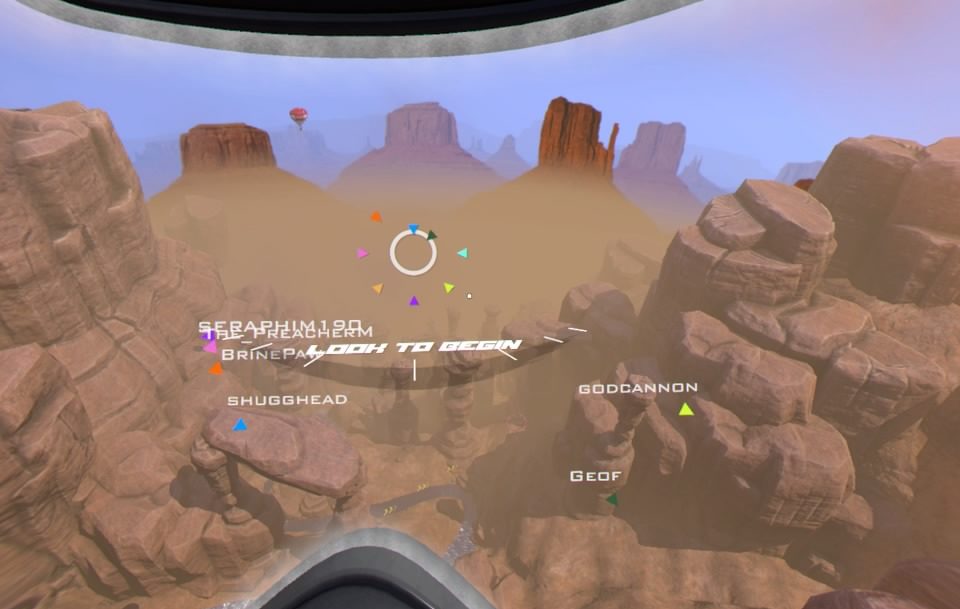
The vistas here are sprawling and beautiful I’m not going to cover all the individual control methods available because there is plenty. You can use the Moves or DS4 with multiple options like tracking the position of the controllers or how you tilt them, or you can just use head tracking or a combination of a controller and head tracking. After trying them all out I will recommend the stock Motion controller option which has you holding out your hands as if you were Superman. You can adjust inversion settings but basically you fly by tilting your hands up or down to go up or down and tilting your hands left or right in the direction you want to go. The only downside to this mode is that your arms get tired but take a small break in between rounds and you should be fine. I urge you to try them all out yourself and see which may be more to your liking and regardless of how terrible I am with some of those methods, I still appreciate the option none the less. There are also some other comfort options available as well, so you may be a little sensitive to sim-sickness, you can do your best to circumvent that. Regardless of which method you pick the game mechanics remain the same…fly through rings or ride close to the ground or cliff sides to maximize that boost and finish in 1st place.
There are 3 modes of play available, Race, which is exactly as it sounds with you racing through 1 of 80 courses while flying through rings and getting those boosts. Should you miss a ring, 5 seconds will be added to your finish time, which is a death sentence during the campaign so don’t miss them. Time Attack is exactly that with you challenging top times and score attack challenges you to ride those edges for maximum points. All of these modes are available in single player or the oh-so glorious multiplayer which supports up to 11 players and is an absolute blast. I can’t stress how much I had not only racing against my friends, but just messing around in the plane/waiting area in between races. The sandbox mode in this small little place is an absolute delight as you pop the caps on some canned drinks, mess around with dart guns or try and get a basketball in a hoop. You can perform a wide array of hand gestures which also makes for some comical moments and I guarantee if you play online, you’ll spend way more time in this area then you intended.
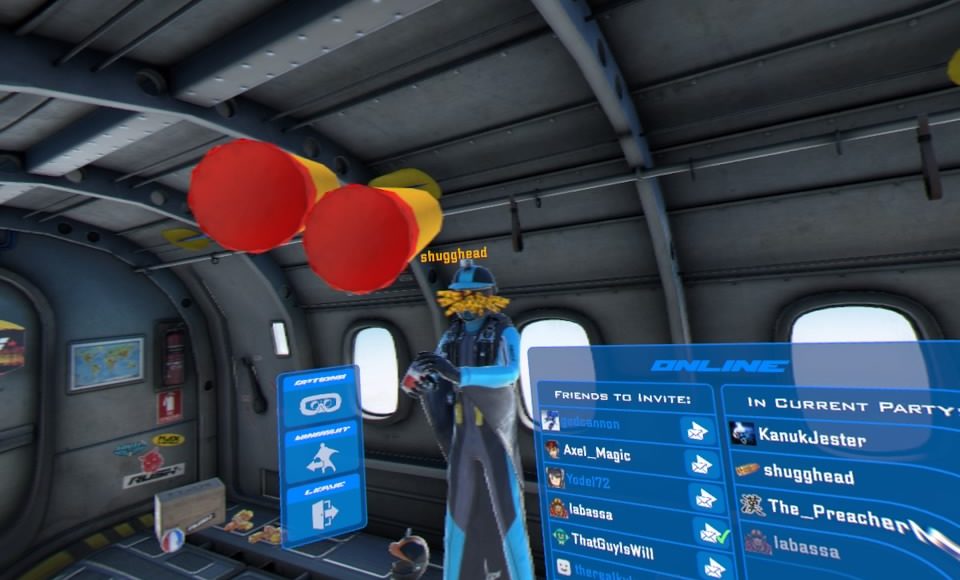
Messing around in the hub area is great fun! So, like any pseudo-simulation the visuals need to be up to snuff lest immersion be ruined and thankfully, on the Rift or PSVR, the game looks pretty damn good. Rush is originally a Gear VR game which definitely worried me when it came to the graphics, but this game is loaded with a lot of ‘wow’ moments. The 4 stages all carry a very different look and while 1 or 2 looks better then the rest, they are all wonderful representations of their real-world counterparts. The opening stage, green mountain side probably looks the ‘worst’ out of the bunch, but even here there are some great moments, especially when the time of day changes or a storm rolls in. The weather and lighting effects in any of the levels give them a fresh coat of paint so even if you have played through a stage for the 15th time, you still might see something that you hadn’t before. Bottom line is for a wing-suit game, I am more then happy with the cliffs, tunnels and rock faces that look good enough to reach out and touch…but for the love of god, don’t do that, you’ll just crash. Heck, if you crash you end up in a base camp, which is live in the race, so you can see your fellow racers coming in for a landing, or if you have the skill, parachute into camp and give those losers a nice view of your oh-so sweet victory.
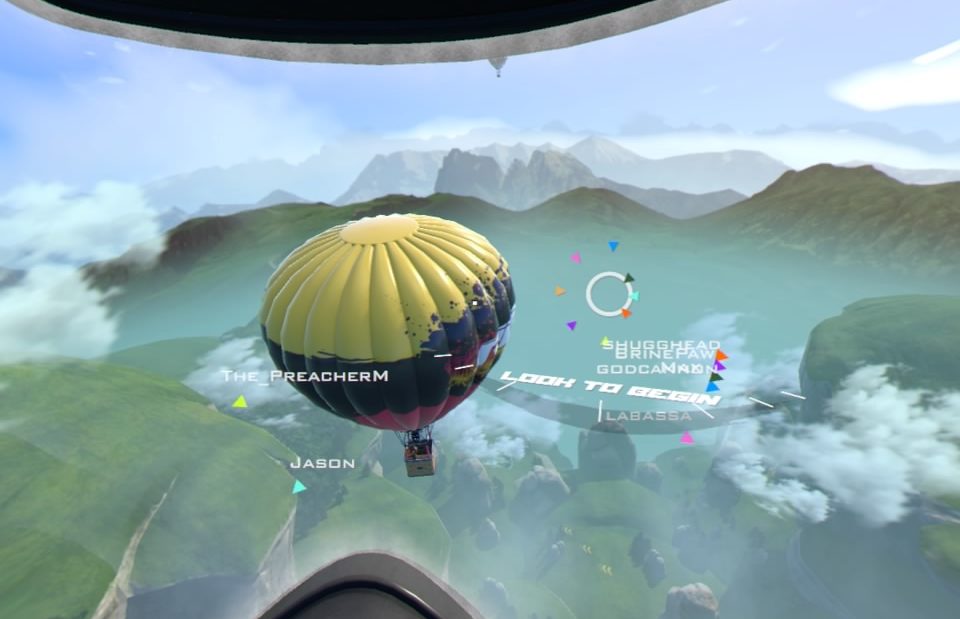
SOOOO much pretty! The sound design is a little more wanting, but at the same time delivers what it needs to, to to get the job done. Each of the 4 courses delivers a singular track which is inoffensive enough, but also wears out its welcome after a handful of races, so you may end up turning that off. Thankfully, the 3D audio awesome and makes you feel the speed at which you are flying. Using you boosts increases that feeling and as you fly by waterfalls and cliff sides you can’t help but get a thrill as you narrowly avoid a crash, ending your race in an instant. A commentator gives you some generic quotes throughout a race depending upon your ranking though I also found here to get a little annoying after multiple plays. Either way, whether you play with everything or just the effects, when combined with the visuals, the audio, and presentation overall is enough to put in the game and experience what many of us may never try in real life.
So, besides the minor audio and visual foibles I really can’t whine about to much else. Rush VR immediately brought me back to the days when I snowboarded down a mountain in the SSX series and is such a welcome addition to my VR library. When playing with 7 players online, we did run into a few hiccups with guys being randomly kicked from the game, but we still managed to play a bunch of rounds together and admittedly we played pre-release with guys all around the world, so the servers may not have been fully ready for us to test them like that. As I said the terrain does start to get a little repetitive, so I would suggest jumping back and forth between settings just to keep them feeling fresh a little longer. They are still huge areas with a ton of paths to play around in so one run may be completely different from the next.
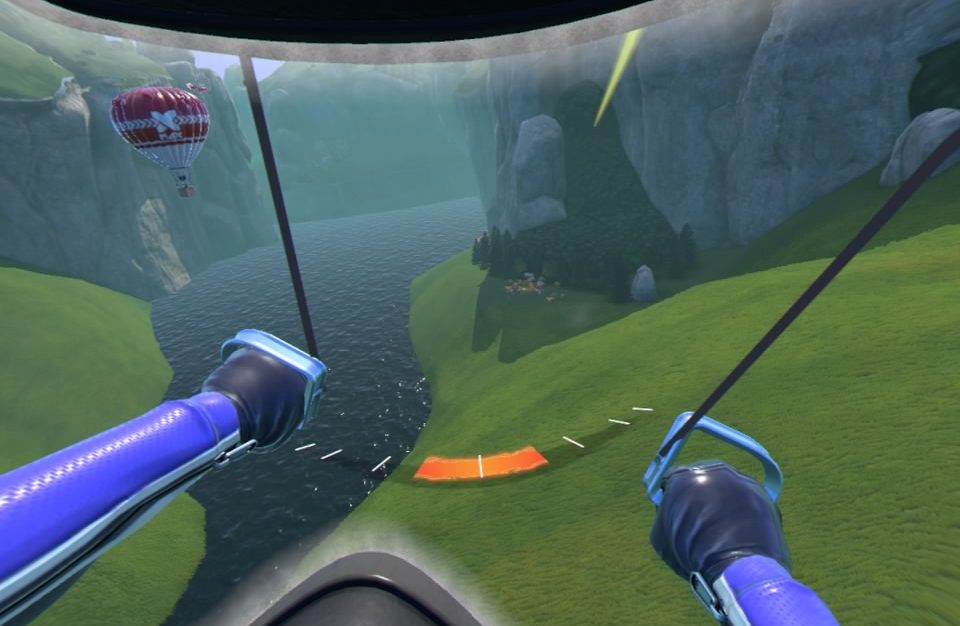
Incoming!!!! Rush VR is exactly what I needed from my VR headsets. There is more content here then I would have expected from such a small developer and they delivered big time of the wing-suit experience. Games like this are why we all bought into Virtual Reality and you owe it to yourself to give this a go. This is some of the most fun I have ever had in my almost 3 years of playing around with VR.
What would I pay? Name a cost, I’ll pay it! In all seriousness the $30 price tag might seem a little steep to some but there is nothing else like this available on out headset that delivers such a fun and thrilling experience. I’m cool with $30. It’s loaded with content and a fully realized online mode that will keep me coming back unlike many other titles.
The Binary Mill provided The VR Grid with a review code for this title and, regardless of this review, we thank them for that!
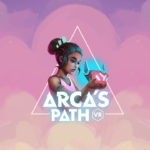
Arca’s Path
Publisher – Dream Reality Interactive / Rebellion
Price – US $14.99 / EU €14.99 / UK £11.99 / AU $19.95
Release date – December 04, 2018
Control Method – Gamepad, Motion Controllers, Head Tracking
Pro Patch – No
Digital only – Yes
Reviewed on – Oculus Rift
Arca’s Path looks to bring the simplicity to 3D VR platformers by making the controls as simple as possible allowing it grace almost every headset that matters. You play as a young woman who is trapped in the world of Arca and it’s up to you to escape through a series of stages that has you taking the form of a sphere as you roll around stage after stage in a race to get to the end.
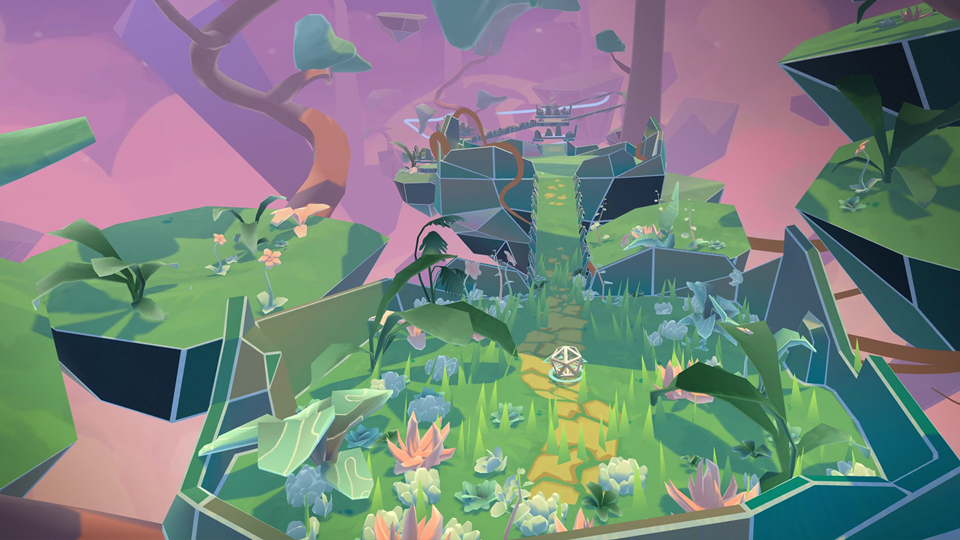
looks pretty good right? So, as I said, the controls are simple, allowing just about anyone to hop in and play with only a few seconds of practice. You control a sphere and must look at the ground where you want it to go. The camera and reticle at the center of your vision always keep you in place and as the camera only follows the ball, it’s very easy to stay focused on the action. Controllers are still needed, but only to access menus with the only other gameplay option being able to freeze the level you are on, allowing you to look around. Throughout each stage are gems scattered about that can be collected to unlock the time trial mode for that stage, should you get all of them and if you miss a few during a stage, you can revisit that stage and try again with the game keeping track of the ones you have already collected.
Arca’s Path has a cool art style that has the world being built around you in a spherical fashion. As you move through the level, the world before you assembles, reminiscent of what we saw in the dream sequences of Dead secret with the level design of Bound. Like any platformer, the stage themes do change a bit over the course of the campaign, but don’t really look that different with the biggest difference being the color palette used. A bulk of the stages are narrow paths, typically with edges so you can’t roll off, though the challenging sections remove those edges and require a little more finesse. The animatics in between stages are just still images with some very light animation and music and look as though they were taken from a comic book.
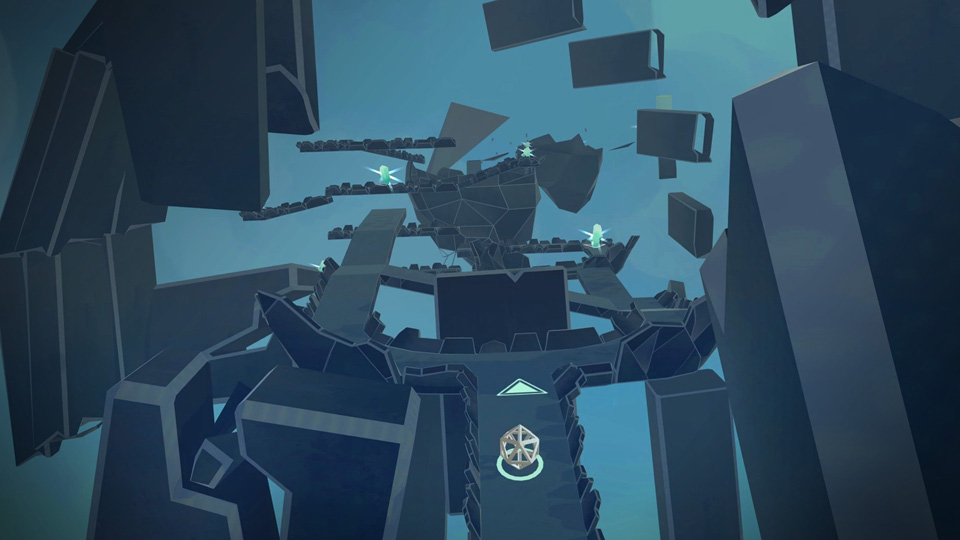
The level themes do change up bit The sound design is probably the best part of Arca’s Path with the music being chilling and immersive initially though doesn’t mix up the playlist enough to keep it sounding fresh. The longer I played through the game, the less I appreciated the music and effects and by the end of the game, I was honestly pretty tired of the presentation in general.
Arca’s Path relishes it’s simplicity and while the basic nature of the game makes it very easy to pick up and play regardless of your gaming skills, that same simplicity makes the game feel monotonous quick. Whether it’s the first or last stage, the game feels the same. New elements are introduced throughout like moving platforms, traps and even a very light stealth section toward the tail end, but with the controls being so basic, all of these obstacles are solved in 1 of 2 ways…go fast or go slow. I also wish there was an insta-freeze button, so I can look around a little easier. The pause in between stopping and starting the action really annoyed me when all I wanted to do was check out the environment for a second. The story elements are so light as to be almost non-existent with there being just enough to explain your situation without really explaining why you are rolling around in a virtual world. At least for me, I was very confused by it all.
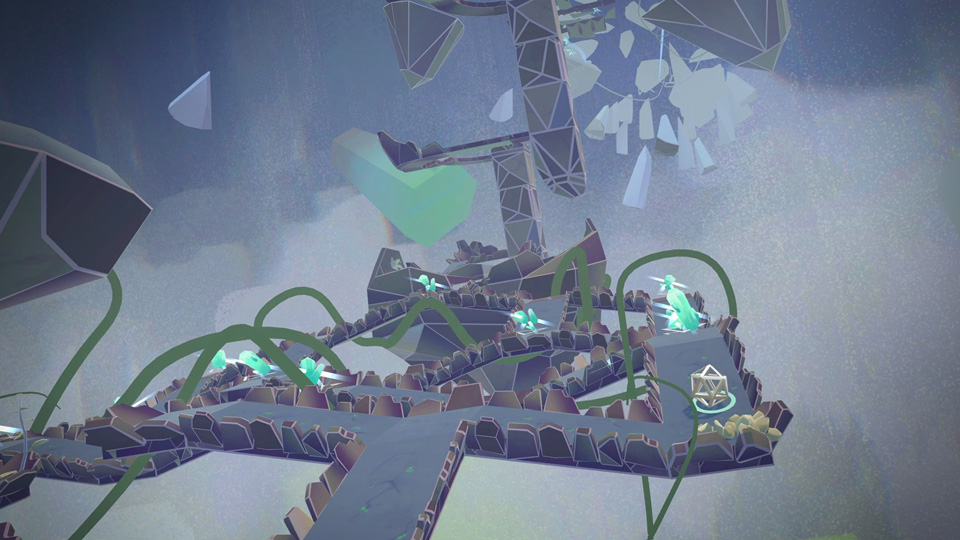
Up and up we go! Arc’s Path, I think, nails exactly the vision the developers had in mind for the game. Each element of the game, when looked at individually, is solid, but when looked at as a whole is a game that is in no way bad, just monotonous and dull. Anyone can play it and I think initial impressions wil be positive, but the longer I played, the less I cared about every aspect of the game, to the point of annoyance and a little frustration.
What would I pay? I’d be a lot happier if this was in the $8 to $10 range as opposed to the $15 asking price. Nothing in here is broken, but this boils down to being to simplistic of a platformer to really keep me intrigued for longer than a few missions at most.
Rebellion provided The VR Grif with a code for this title and, regardless of this review, we thank them for that!
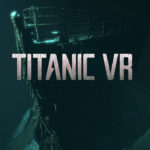
Titanic VR
Publisher – Immersive VR Education
Price – US $19.99 / EU €19.99 / UK £15.99 / AU $29.95
Release date – November 22nd, 2018
Control Method – 2 x Move, DS4
Pro Patch – No
Digital only – Yes
Reviewed on – PS4 ProEducation and VR would seem to go hand-in-hand but many times these types of experiences fall short of expectation. Some end up being collections of 3D videos, not true VR, or under utilize the tech giving us shallow and frankly, boring experiences that do little to expand upon whatever that experience is covering. Titanic VR is the latest in VR education as it attempts to bring us closer to the ship than any of us have ever been before while still teaching you about this unsinkable vessel, now lying at the bottom of the ocean.
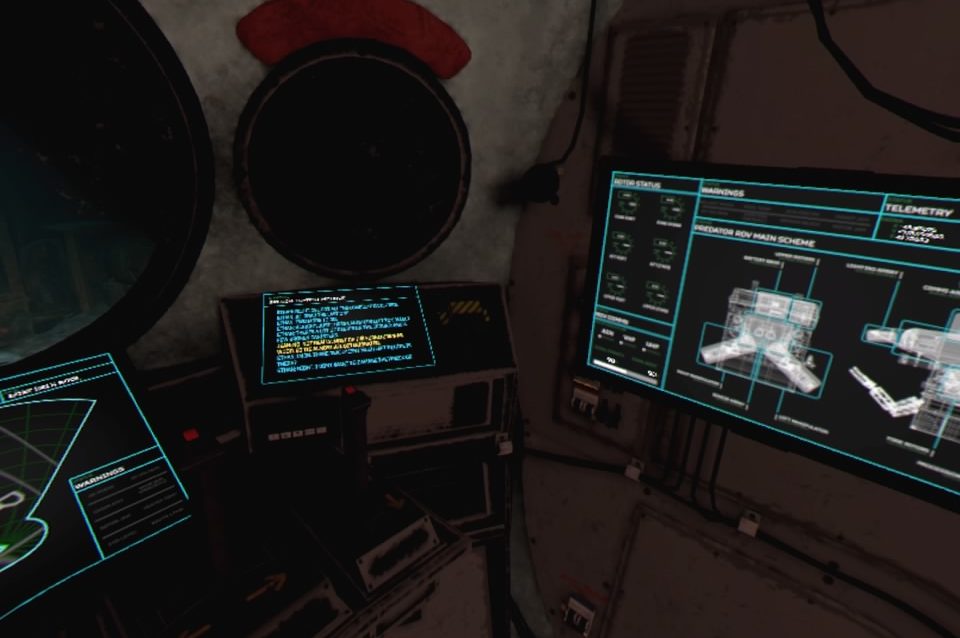
Meet the inside of your subermissable! There are 2 main sections in the “game” portion of this experience with both supporting the Move Controllers or DS4. The bulk of the game involves you piloting a 1 man submersible as you explore the exterior of the Titanic as it would have looked in 1985. With the Moves, you physically grab the levers in front of you to move the sub up/down, left/right and forward/backward which is a really cool and immersive way to explore the ship. The DS4 assigns those controls to the thumbsticks, which is truthfully way easier to drive the sub, but does take away from the immersion factor. There is a campaign here that will require you to find and retrieve items from inside the ship from areas inaccessible from your sub. Thankfully you have a ROV, a smaller remote-controlled drone that you can use to reach the smaller sections of the ship. With this drone you have a couple of arms that can be used to grab items too be brought back to the sub for restoration and analysis. This section of the game is substantially duller but does give some insight into the work that went into recovering these lost items and from an educational stand-point I appreciated what this section entailed. Here you just teleport from station to station using a few different cleaning methods to uncover what exactly the lost item may tell you about the ship and its passengers and pushes the narrative along. You can also upgrade the ROV giving it some mission specific options that slightly mix up the gameplay.
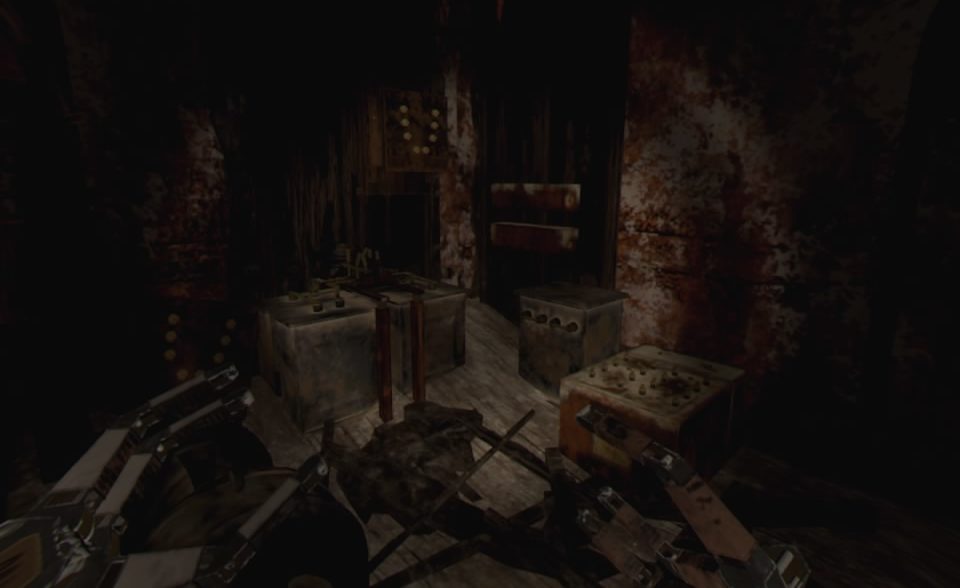
Exploring the ships remains with the ROV reveals some cool visuals Titanic VR looks decent thanks in large part to the murky depths minimizing what the game needs to render and the fact that a bulk of the ship is rusty brown, which just wouldn’t look that good anyways, aids the limited resolution of the current headsets. Navigating around the outside of the ship is thrilling, assuming you dig this kind of stuff, and it’s so eerie and intriguing to see lost ship almost stuck in time in it’s fading state. Exploring with the ROV gets you closer to the ship, which does highlight some rougher textures but it’s still so cool to see rooms and (no disrespect) set pieces from the movie of the same name. It’s clear that a lot of time was spent recreating the Titanic as close as the developer could to deliver an unparalleled experience. Besides the campaign section is a 15-minute video recreating the final moments before the Titanic sank. On the PC side, this portion uses game engine footage and places you there in full 3D VR. On the PSVR side, due the power constraints of the console, the devs were forced to make this a 360 video instead which may be disheartening to some. One issue with this video is the scale as the people just looked to large. You are just a camera in these final moments, but it feels like the developers just chose the wrong angle for a bulk of the action With that said, I thought the video still looked really good, if not a tad too dark, and even though it was only 360, I thought the visuals were still good enough and when combined with the acting was still an emotionally stirring experience.

This is the lab where most of the plot unfolds A lot has gone into the presentation in both of these modes with the ship’s final moments being fully acted out in…alright fashion. Not every actor delivers his or her lines perfectly but it’s enough to put you in the moment, especially when you hear the cries and screams off in the distance as the ship disappears into the ocean. Throughout the campaign you play as a male explorer tasked with driving the sub and ROV and talk back and forth with your female compatriot on the surface. Banter about your current objectives and discoveries peppers the story, breaking up what would otherwise be almost complete silence. When in the restoration facility, the plot will carry forward with some phone calls and conversations with the acting here being a little better then the 360 video. Actual witness audio recordings, taken from interviews, are also played throughout the game and it’s very clear that a lot effort went into making this more then just an educational experience by adding a ton of content to keep your interest.
I really enjoyed exploring the Titanic in the main game and the sinking was a cool experience, even if it wasn’t full VR. The other modes available are Exploration Mode, which lets you freely explore the ship at your leisure, exploring every nook and cranny you can and take in sights you may have missed in the 6-hour(ish) campaign with the last being a controller free tour of the ship, showcasing what you would have seen in the campaign in a more controlled scenario and can be viewed in a short or extended tour with fully narrated facts peppering the ride. Even the work that went into the campaign; finding mystery items and uncovering their origins is at the very least a nice break from just searching the ships remains. The sections where you need to clean up the items do feel redundant almost instantly as does manually upgrading the rover, but these sections are typically so short as to not hamper the overall experience. With the DS4, head tracking and the highlighting of items is a bit finicky and, on many occasions, I had trouble locking on to what I was looking at as opposed to the Moves, which let you physically move your hands in VR and makes interacting with the environments a little easier. Some of the text in your sub is also really blurry until you lean in close, which isn’t a crazy issue, but one that annoys here and there throughout the game.

Watching the Titanic sink is an epic experience. Titanic VR, despite its shortcomings, is an experience that I thoroughly enjoyed. I appreciated the educational aspects that were in the campaign and I enjoyed the final moments on the ship. I didn’t dabble to much in exploration mode, largely due to playing through the campaign and the tour was a nice touch and a great experience to demo to friends. If you have ever been curious about the Titanic and its histories then I think you will pull a lot from this and even if you aren’t, knowing this is an accurate representation of the real-world wreck almost 4 Km below the ocean’s surface is real cool concept brought to our headsets.
What would I pay? I am totally fine with the $20 price tag, but fully admit to having been intrigued by the Titanic since I was a kid. Just exploring the vessel was worth it to me and all the extra added content on top of that makes this an experience I would highly recommend. I will say that above anything else, this more experience then game as the only real gaming element is driving the sub and ROV but as log as you can get behind that, I think you’ll appreciate what this title is bringing to the table.
Immersive VR Education provided The VR Grid with a review code for this title and, regardless of this review, we thank them for that!

In Death
Publisher – Solfar Studios
Price – US $29.99 / EU €29.99 / UK £24.99 / AU $42.95
Release date – November 27th, 2018
Control Method – 2 x Move, DS4
Pro Patch – Yes
Digital only – Yes
Reviewed on – PS4 ProSometimes a game comes out of nowhere and just kind of wow’s you! In Death is just that and is an FPS Roguelike that seems to me a merging of the Persistence, Trickster VR and Dark Souls, only taking place in the procedurally generated medieval after-life populated with knights, monks, demons and a host of other baddies. Your task is simple, dispatch as many enemies as you can, getting more powerful in the process to make it to the end game boss and do it all in one life!
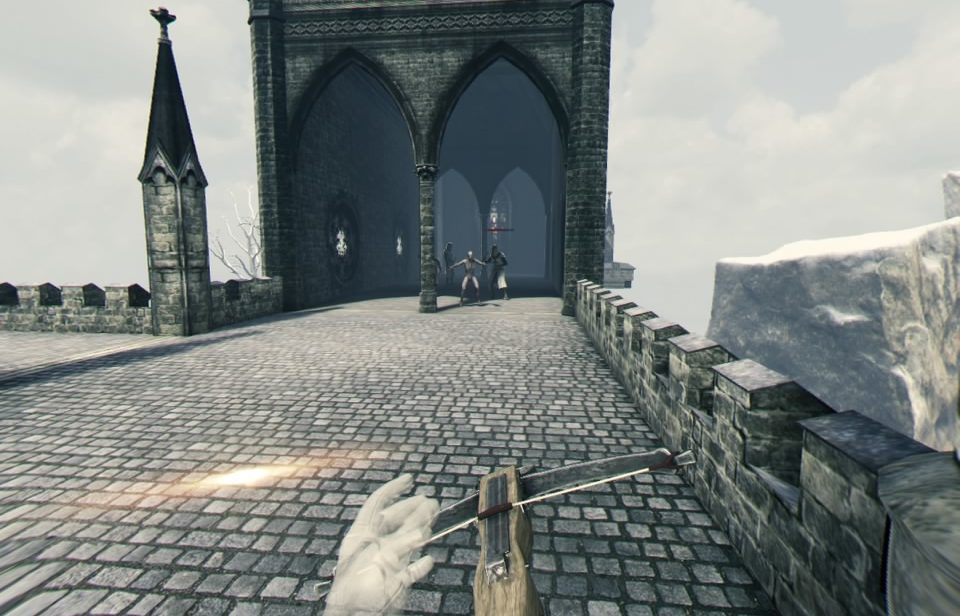
Range is your friend In Death utilizes both the Moves and DS4 controllers and I much preferred the DS4 as it just offered a little more freedom of movement, which I greatly appreciated in the harder sections of the game. Neither controller is a perfect solution as while the DS4 afforded easier movement, you lose the tracking of the Moves, which I found to be more accurate with the ranged weapons at your disposal. There are a few options available including free motion or teleport along with an adjustment for how many degrees you click turn, which is appreciated but I would love to see smooth turning as a comfort option. Once in the game you are armed with a bow or crossbow and leave the starting area, called the Sanctuary, shooting down anything that comes your way. Walking is a little on the slow side, but thankfully you have a special teleport arrow that will move you to wherever you shoot it allowing you traverse a ton of space in a quick amount of time, even bypassing portions of the levels should you choose. Relieving these poor souls of their precious life essence rewards you with gold that can be spent at way stations in between stages to replenish lost health or buy special arrows to more easily dispatch your foes. You can take a few hits, as indicated by a health bar on your weapon of choice but as health is precious it’s in your best interest to avoid taking any damage. You are also armed with a shield, which I admittedly forgot about for a bulk of my play but is greatly needed when the games difficulty ramps up, and to get stronger you need to complete achievements listed at the beginning of every play. The thing with that is the stronger you get, the harder the game gets with more challenging enemies spawning to take you out.
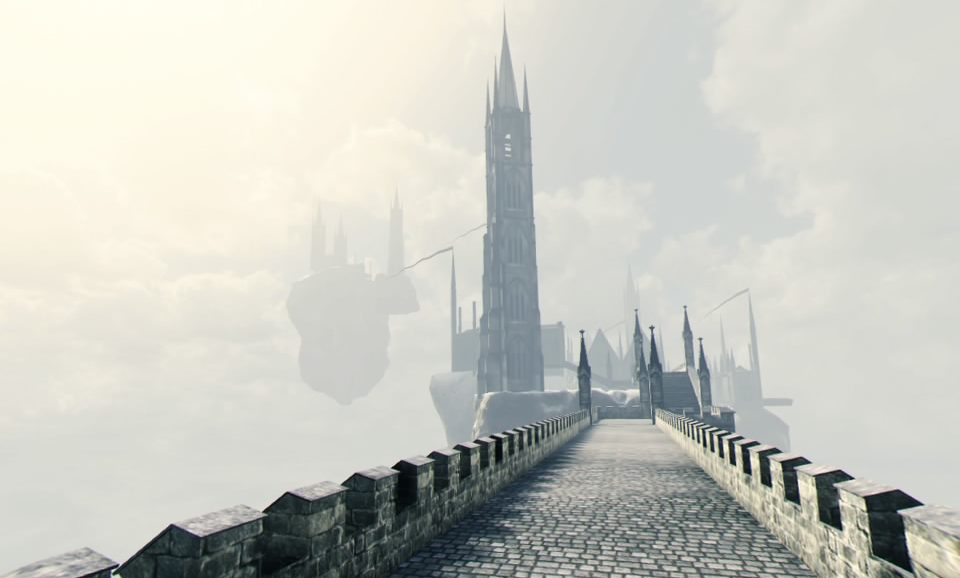
It really looks this good in the headset! In Death looks really good, and while the overall game may look a little drab and repetitive, it’s clear the team at Solfar took their time refining what is offered here. The main level theme looks very stark with it’s grey castle walls and rooms seemingly floating above ground on islands, reminiscent of Trickster VR, which does look a tad off. That said, once you are inside traversing the halls and walkways, you’ll soon forget about that minor visual shortcoming. Enemies look great and while each only comes in a singular model, maybe with a shield or different colored tunic, they all animate beautifully. Even after hours of play, I’m still impressed at the physics at play as arrow after arrow rained down upon my targets with them reacting accordingly falling down in a heap only to watch their souls float on to oblivion. While the medieval castle themes level stays the same throughout the game there are a few other areas accessed by portals which carry much darker tones and new setting elements like lava pits or massive scale cathedrals. Not one area or object exudes any kind of happiness and even as you progress further through the levels, everything just looks and feels more dire and no matter what element you choose to scrutinize, the overall look of the game make this one of the better games on the system with almost no jaggies to speak of, yet still containing a very crisp and clean look.
This is an odd mixing of game types and visuals and fitting with that theme is the audio. The combat and sound effects are relatively standard with enemies making grunting and groaning noises when they are nearby, though I noticed these sounds tended to be ambient, not really 3D. With that said there are some great 3D audio effects as enemies get close or when arrows fly past your head making for some exhilarating moments. What is most striking is the soundtrack, which is a collection of gothic/gospel songs that just shouldn’t be in a FPS game like this and yet here they are…and they fit perfectly with the somber and thrilling tones of the game. It’s hard to explain, but when the looked as a package, the presentation in In Death offers up something I have never experienced before in video games.
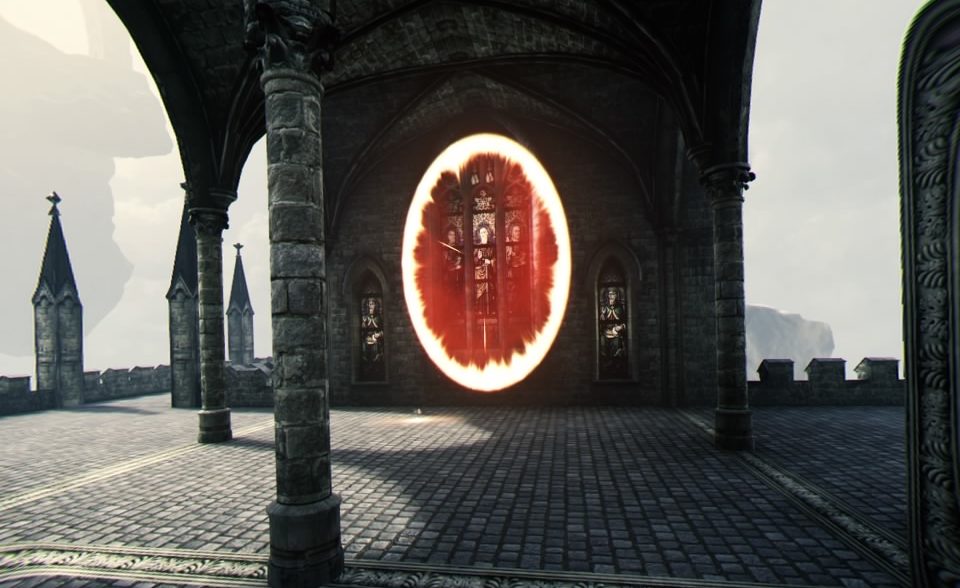
Portals typically offer more challenege. As this is a rogue-like you will be playing the same sections over and over but as each death changes up the stage layout, every new start feels fresh. As you level up and unlock new abilities for yourself (mostly in the form of damage modifiers) so too do the enemies. Initially I was only fighting Templar Knights and robe wearing archers and thought, is this it? I wasn’t focused on getting the achievements, which the game could do a little better in explaining, and once I did, noticed the spike in difficulty upon each death. Enemies began to unlock abilities as well like the teleportation, often appearing behind me and new enemies slowly began showing up. There are bosses in here which are incredibly difficult to defeat, but it never truly felt unfair just extremely challenging and the satisfaction of defeating one of these baddies is its own reward, but the crushing defeat when you make it that far only to lose is equally maddening.
So, as I said, neither controller method is perfect with each carrying a few oddities. I hated moving with the Moves, and in tough situations I succumbed every time to its limitations with the short teleportation shard ruining my rhythm in tough battles. With the Moves I also disliked the feel of crossbow reloading and much preferred the easier button press reload option on the DS4. With the DS4 however, I found aiming to be a little more tricky as it’s just harder to properly line up a shot and what is much more noticeable with the DS4 is that when you reload, for a brief moment, the game locks your weapon in place, but if you move your controller in that time, your positioning in game no longer matches the controller. A quick shake fixes that, but it did annoy me throughout my playthrough. Enemies are also only triggered by getting to close to them or hitting them with an arrow, making them aggressive toward you, which does feel a little cheap sometimes (in your favor) but is once again balanced out later in the game by the number of enemies you may face at one time and when they sneak up behind you. The goal is to unlock achievements, but after you leave the starting area, there is no way to view them in-game until you die so I guess the goal is to pick a few to focus on before you start killing everything but I would love the option to view these while playing, especially in deep runs where you know you could be making some mad progress toward leveling up.

This guy is a pain in the ass. In Death is…great! I think I’ve logged in a paltry 5 hours or so and I’m hooked. The game may look a little redundant if you aren’t playing it, but the constant progression and mix up in levels and enemies gives this game a tonne of replayability. The one last item I will mention is the “asynchronous multiplayer” which allows you to send a map seed to your friends and see who can get the higher score, which is a nice little addition, though one I didn’t get a chance to delve into. Throw in the stellar gothic presentation and some fantastic VR visuals and this is a delight as the game constantly pushes you to get better with very well-balanced difficulty that has you feeling more powerful with each Death but increases the challenge, so you never truly feel safe, making for an overall exhilarating experience.
What would I pay? The $30 price point on this is perfect. There is a ton of value here and I’m talking about content and fun factor. Even from the get-go you feel almost overpowered when compared to the enemies you’ll face, yet death always seems to find you urging you to keep pushing forward just to show this game that you are the boss. This is addictive, fun, immersive and one of the better-looking VR titles out there. If anything I’ve said interests you, pick this game up!
Solfar Studios provided The VR Grid with a code for this title and, regardless of this review, we thank them for that.

Space Pirate Trainer
Developer / Publisher – I-Illusions
Price – US $14.99 / EU €14.99 / UK £12.99 / AU $29.95
Release date – November 27th, 2018
Control Method – 2 x Move
Pro Patch – No
Digital only – Yes
Reviewed on – PS4 Pro / Oculus Rift
Let’s get our SHOOOOOT ONNNNNNNNN!!!! Space Pirate Trainer is a game I have heard about for quite awhile and has been a staple for VR headsets since its full release late last year. The premise is simple, and the name says it all as this is a training simulator for…you guessed it, Space Pirates. What this boils down to is a stationary wave shooter where you need to defend yourself from incoming flying robots who try their best to put you out of your misery.
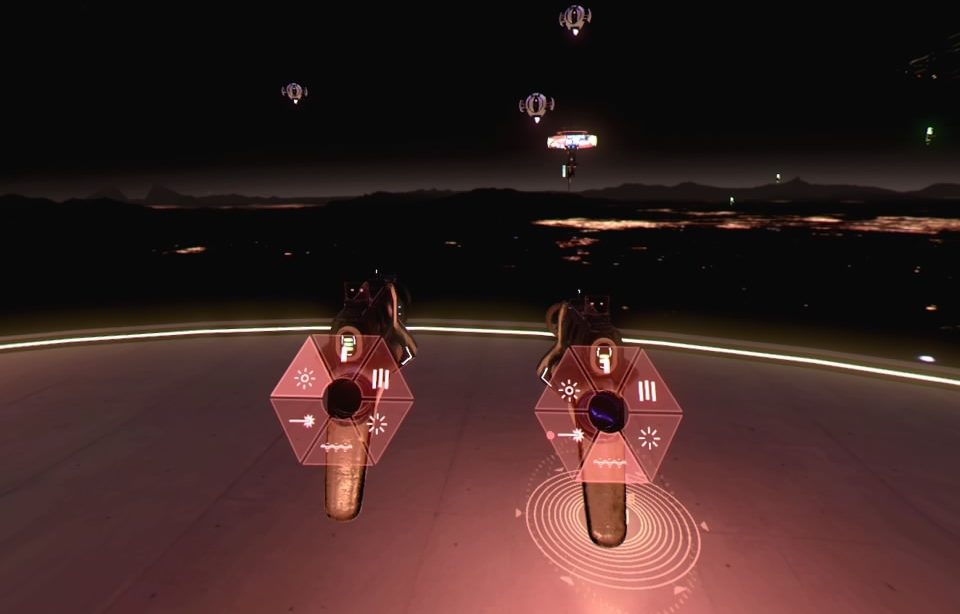
Choose your ammo type and unleash. This is a dual wielding affair so of course you need 2 Move controllers. The base mechanics are anything but simple with a plethora of options available to dispatch your foes but are so intuitive as to make it very easy to switch between weapons and attacks. You can dual wield pistols, with each carrying a variety of ammo types you can switch on the fly like a pistol, revolver, shotgun and laser which are tailor made for the variety of enemies you’ll encounter so mess around. Reaching over your shoulder swaps the gun for a shield or laser bat(?) which can be used to block incoming fire or activate 1 of 4 turrets nearby. To activate a turret, you lose the use of that arm, but they deliver a variety of barrages which once again, are tailor made for specific enemy types so mess around. Throughout each wave you can pick up powerups which may offer you larger shields or different types of ammo like more powerful shots or missiles. The drone like robots you face don’t hold back and while each type does behave in a specific fashion, when they unleash their attacks you need to be on your toes. Luckily when laser blasts get to close to you, time slows down to a crawl giving you precious moments to figure out where you are being attacked from and dodge or shoot the blasts out of the air. Your stock guns fire quickly for a few seconds before they overheat and shoot slower, so you need to release the trigger often to ensure you can fire as fast as you can as often as you can. You can choose 1 of 4 gameplay modes; Arcade which gives you 3 lives to take out 35 waves of robots, each harder then the last, Explorer, which plays the same as Arcade but let’s you regenerate health but gives half the points. Hardcore removes the bullet time effect when blasts get to close and Old School gives you some classic waves shooting action and I honestly couldn’t tell you the difference between that and arcade other then a slight mix up in the waves…I think.
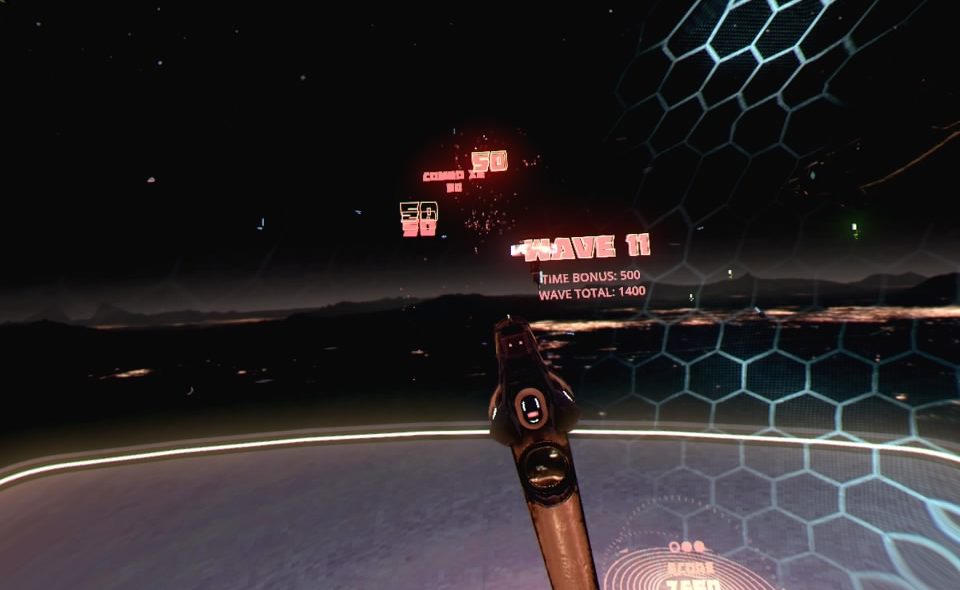
Shields are a life saver! Space Pirate Trainer looks great with simplistic, but striking visuals. Lighting and most objects are neon green in color while everything not colored is black making everything just pop. There are only 2 different stages to choose from, which don’t affect the game, just the aesthetic but both look good. Robots rise up in front of the platform you are on and come in a wide variety from simple small drones to larger enemies with each behaving in a specific pattern. They fly around 180 degrees in front of you so it’s relatively easy to keep track of them early on, but later swarms come in such high numbers you’ll have almost no choice but to constantly move to stay out of the way of enemy fire while trying to send those robots to the scrap yard. Every ammo type has its own look and feel with the turrets carrying some extra oomph as they obliterate in a spectacular fashion. Everything runs flawlessly making for a smooth and near perfect experience and the bullet time effect, when activated makes you feel like a badass. The sound is also spot on with some high-octane techno tracks to get you in the butt kicking mood.
Space Pirate Trainer is a near perfect arcade style stationary wave shooter offering intense action typically in short bouts. There is no campaign to speak of, just pick a mode and see how far you can climb up the leaderboards. I would put this in the same rankings as the much-lauded Blasters of the Universe and the under appreciated VR Invaders as being great examples of the genre. This is great fun in VR and while “yet another wave shooter’ might bore you in concept, there is a very good reason why people hold this game in such high regard. The shear variety in methods used to take out these drones keeps the game feeling fresh, as long you play in small sessions, which the game is kind of designed to do. If you dig wave shooters then this is fantastic, but if you are looking for a little story or change of scenery, it’s not here. The focus is on the gunplay and in that regard, Space Pirate Trainer nails it!
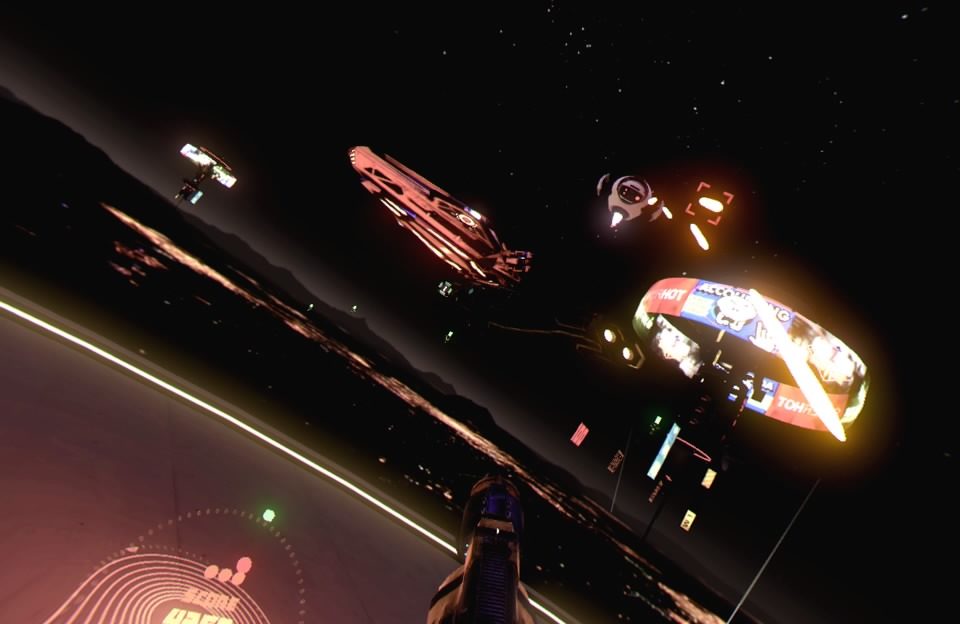
It’s hard to tell, but I’m dodging lasers right now. Space Pirate Trainer will totally tickle that FPS itch as long as you don’t care about plot and love any excuse to blast whatever is in front of you. The combat is satisfying and gets incredibly challenging, the power-ups spice up the gameplay and the slow-motion Matrix effects add to the visceral VR fun and like I said, this is a mechanically perfect wave-shooter and while it may be a bit on the simple side in regard to content, it more then makes up for it with the ridiculously fun gameplay.
What would I pay? This is a great showpiece for VR as anyone can pick this up and play it, making this a title that I will show my friends and gives it value beyond my own personal interests. I’m okay with the $15 asking price on this for that reason and like I said, this is a technically perfect wave shooter.
I-illusions provided The VR GRid with a code for this title and , regardless of this review, we thank them for that!

Affected: The Manor
Publisher – Fallen Planet Studios
Price – US $7.99 / EU €5.99 / UK £5.99 / AU $9.95
Release date – November 27th, 2018
Control Method – 2 x Move
Pro Patch – No
Digital only – Yes
Reviewed on – Oculus Rift
Affected: The Manor has been a staple of VR horror games with early versions of the game gracing the Oculus DK1 headset. Fast forward to 2018 and this title is available on almost every major headset and now us PSVR users can finally see what all the fuss is about. For those that don’t know, Affected is horror title aimed to scare the pants off of you as you explore a creepy mansion armed with only a flashlight.
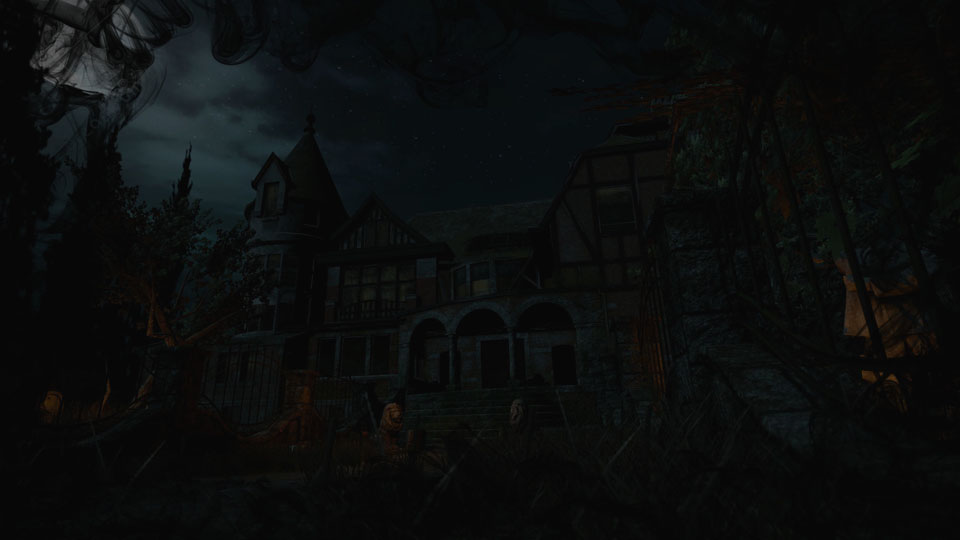
Guess where you are headed? Across the PS and PC headsets are few different control options with my favorite being very similar to the movement controls in Skyrim with your right hand holding a flashlight using trigger to walk and your left hand determining which direction you will actually walk in. It’s worth noting that due to the limited tracking of the PS headset you can manually turn by pressing buttons, an option not available on the other headsets, which I actually missed. Besides walking, the only other thing you can do is shine a flashlight around to help navigate. The flashlight is scripted to the game, so it will go out and come on as you navigate the 2 linear paths that take you through the mansion. That choice is given early on with you choosing left or right and each path will give you a choice toward the end of it that will give you a slightly different ending animation so in total there are 4 endings to seek out.
As this is a horror title with limited gameplay elements, it better have some decent scares and thankfully, it does! I’m not one to get freaked out in a game, but I do get unsettled and Affected does a really good job of you keeping you on edge. This visuals here are good, not great, but they more then do the job of making you feel like you are in a haunted mansion. It’s really dark, which the game embraces often, but the bouts where your shoddy flashlight kicks in highlight the attention to detail that was brought to this mansion. Haunting pictures hang on the walls, almost every room you enter offers a unique scare and the massive scale of some of these rooms is kind of scary in its own right as it made me feel very small and alone. Bottom line is that scary titles live or die on the visual component and what’s offered here works great!
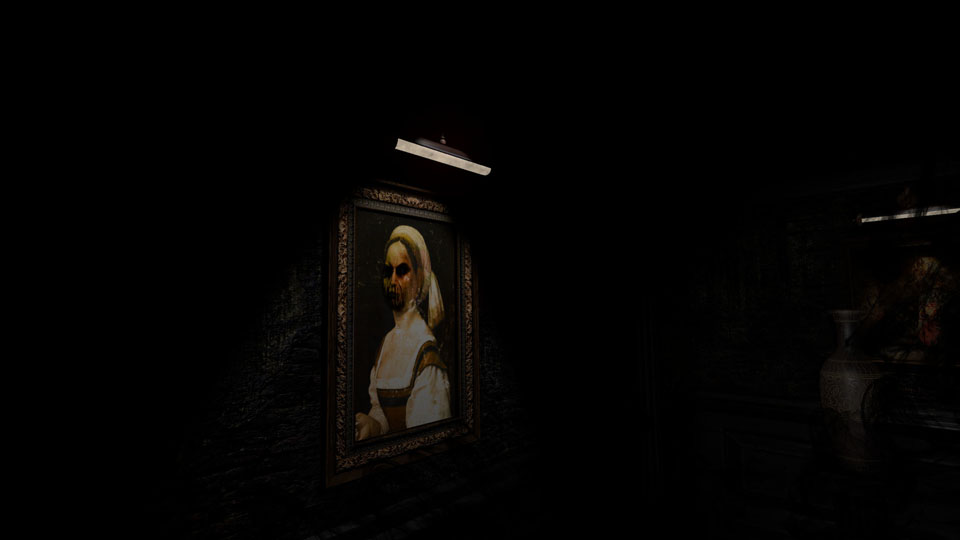
Spooooooky!! Headphones are an absolute must as the 3D audio is superb not only at immersing you in the game but directing you at where to look when you may not be focused on the next big scare. This is some of the best audio I have noticed in a game so make sure nothing is happening around you in the real world to take you away from all the horrifying awesomeness.
While there are a plethora of these types of titles on many headsets, there are only a few on the PSVR so for those looking for a frame of reference, I would liken this to ‘The Bellows’ or even Here They Lie, though this is much smaller in comparison. Each walk through takes around 15 minutes so I think for many this is a half hour experience for most. For the horror junkies, unlocking all 4 ending will double that time but the main draw, to me, is sharing this with others. It’s a lengthy experience for onlookers, but the scares are so refined that those who are dramatically affected by these should provide a tonne of entertainment for everyone else outside of the headset. The only issue I encountered with the game is that on one occasion only, I walked to far before a room’s scare triggered, causing it appear almost inside of me. I’m sure many will take their time as they walk through this, so you may not even encounter what I did.
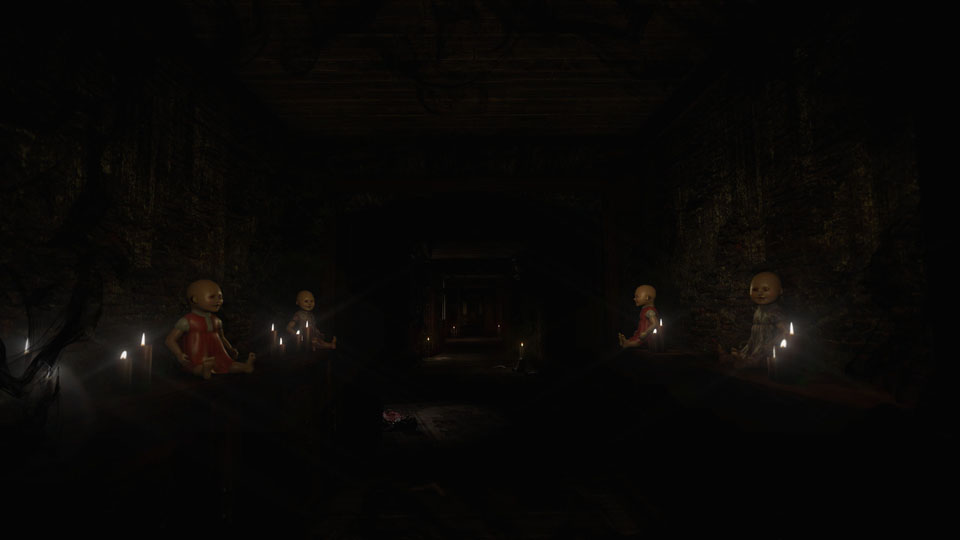
Dolls, why did it have to be dolls…. Affected: The Manor accomplished exactly what it sets out to do. Scare you. If you have never been at least a little freaked out by a VR game, then I doubt this will change that, but for anyone that’s ever felt uneasy walking through the Baker’s house or even took some thrill out of a real life haunted house then I bet you’ll enjoy your time spent in this VERY haunted mansion.
What would I pay? This is easily worth the $6 asking price just for your own personal playthroughs. If you have anyone you know will that will be freaked out by a virtual haunted house then laughing at their plight makes this an easily recommended purchase.

Boxing Apocalypse
Publisher – Gotham City Films
Price – US $19.99 / EU €19.99 / UK £15.99 / AU $26.95
Release date – November 20th, 2018
Control Method – 2 x Move
Pro Patch – No
Digital only – Yes
Reviewed on – PS4 ProIn the last year we have seen an emerging of more physical titles in games like Sprint Vector, Knockout League and Creed, with those titles all be welcomed with open arms as being both fun and physically demanding. 2 of those games I mentioned are boxing titles with Knockout League being a Punchout clone that nailed the single-player gameplay from that classic franchise and Creed delivering a more simulation style boxing game with online multiplayer that for the most part, worked great. Now we have Boxing Apocalypse, which takes pugilism to space as you fight alien after alien in your quest to defeat your captors and attain freedom or face friends in the online portion of the game.

You are nothing more then an alien experiment! It’s boxing so you are going to need 2 Move controllers and let the punching begin. I would advise to play through the tutorial as besides just punching aliens there are a few other unique abilities and powers in the game. Performing combo’s gives you a Power Punch which is used by pressing the trigger and Move button at the same time and is basically a 1 punch knockout if you land it. To block you need to hold your hands up to your face and use the block tool to deflect incoming blows and your boxing gauntlets have weapons that can be unlocked through the campaign that deliver varying amounts of additional damage, though can only be used a small number of times.
The campaign offers 3 different difficulty modes, each containing 3 waves with 3 rounds each with boss battles though each increase in difficulty just reduces your health and the enemies get more aggressive so on the hardest difficulty, losing feels really cheap. To say the action in the single player campaign is uninspired would be an understatement. Accuracy and timing are key, which it should be in any boxing title, but in here it’s either to picky with the timing or not picky at all…I can’t really tell. My hits failed to register on numerous attempts effectively forcing me to box like I was in Punchout, waiting for the enemy to strike so I can deflect their blow and land a punch before turtling again. On the easy difficulty, you can take a lot of damage and unload without much of a care, but on medium and hard, I found just turtling and countering wasn’t just the easiest way to progress but ended up being the ONLY way to advance.
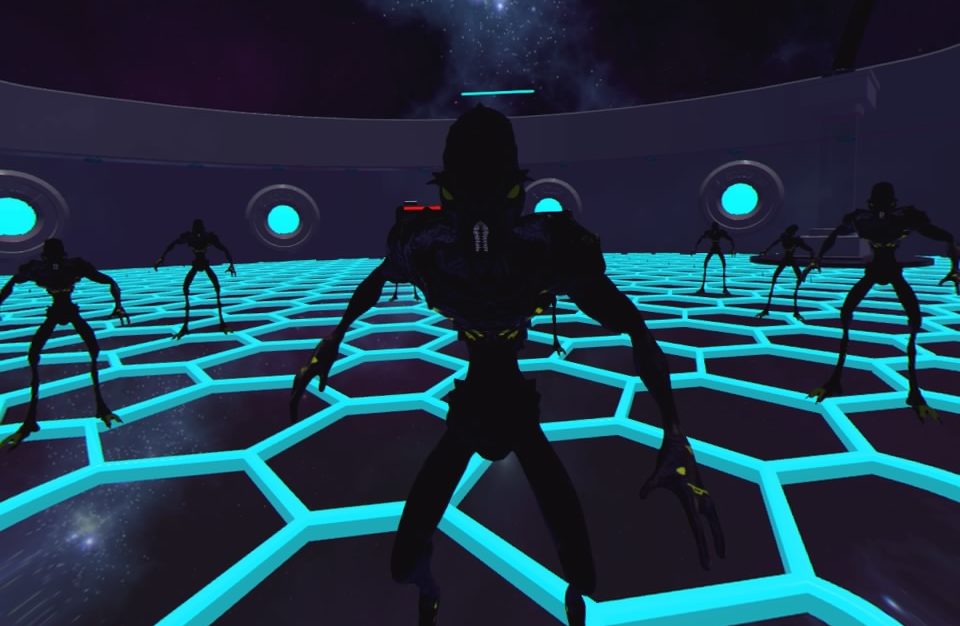
Get ready to face the same aliens again and again. So with the campaign being fluff, and really nothing more then practice for facing human competition, we can also put our skills to the test in some 1 on 1 PvP fights. According the devs, this is the highlight of the game with it being a ‘true fight simulation’ using ‘Real life boxing technique’ and while that may be true if you choose to play that way, online matches, if you can find one, quickly devolve into slugfests. You are supposed to use the play space to simulate real life boxing movements and maybe if you and your opponent could coordinate before a fight, there is no mic support, you could try and put on a ‘professional’ bout, but it’s so much easier to just flail wildly and anyone trying to use skill will more then likely get stomped. Power punches and the gauntlet weapons make fights incredibly short and while the blocking works suprisingly wel some of the time, at other times it feels like your oppenent can just punch through them whenever they want to. Add in that every round both players spawn in the same spot, forcing you to back up to properly face, possibly leaving the tracking range of the camera, and you get a mode that’s more of chore then a treat.
Boxing Apocalypse does not look good, there is no getting around that fact. During the campaign you fight 1 model of enemy, though it comes in varying sizes and the backgrounds and setting look like purchased assets with stiff, limited and repetitious animations. The aliens look like there are lighting effects at play with some good-looking shading, but that’s actually just part of their models, which is made quite obvious by the lack of lighting effects anywhere else in the game. The one highlight is the comically awful power punch animations when you connect with an enemy, often blasting the eyes right out of their heads or just dismembering them in 1 blow, though these repeat so often you’ll quickly be bored of them too. You can choose from a few different stages but none of them look good and while they do have a sci-fi theme, the lack of detail on all them makes it hard to tell there is a theme at all.
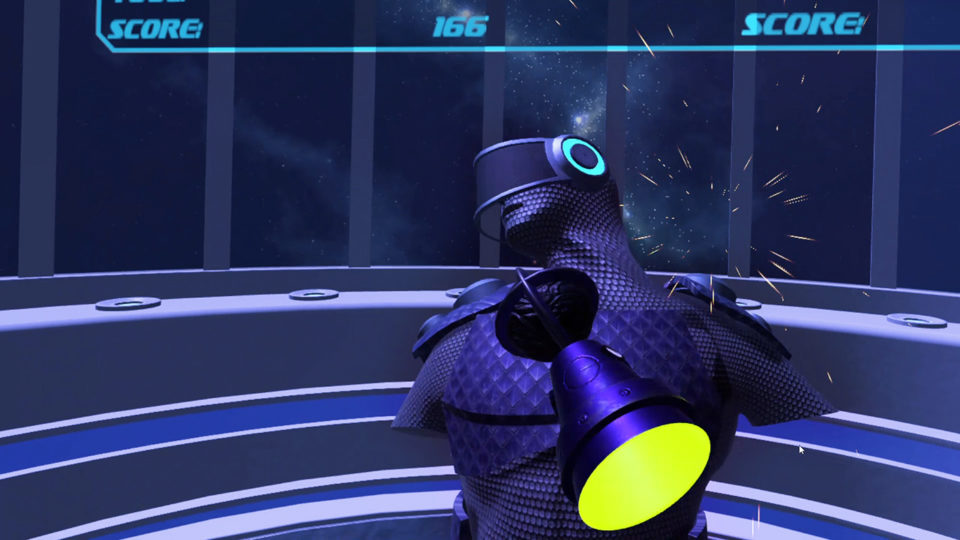
This is less fun then it looks The sound effects are also comical with Bruce Lee-esque “thwacks’ echoing when punches connect and that’s really about that as far as sound goes. The music is really odd and feels like it’s been taken from like 60’s low budget science fiction movie and does not fit the boxing action in any way whatsoever.
So, if it’s not apparent yet, I’m not the biggest fan of this game and while there is a so bad it’s kind of good quality to this, it’s mostly just bad. Every time you finish a multiplayer bout you have to quickly check the scoreboard that pops up to see who won before being kicked back to the main menu. Every time you start a campaign bout you are treated the same cut-scene of the aliens putting on your space gauntlets before knocking you out and fighting through the same aliens over and over. The single player campaign feels like the same bouts again and again and the multiplayer is the same thing, just more chaotic and that’s assuming you can find a match.
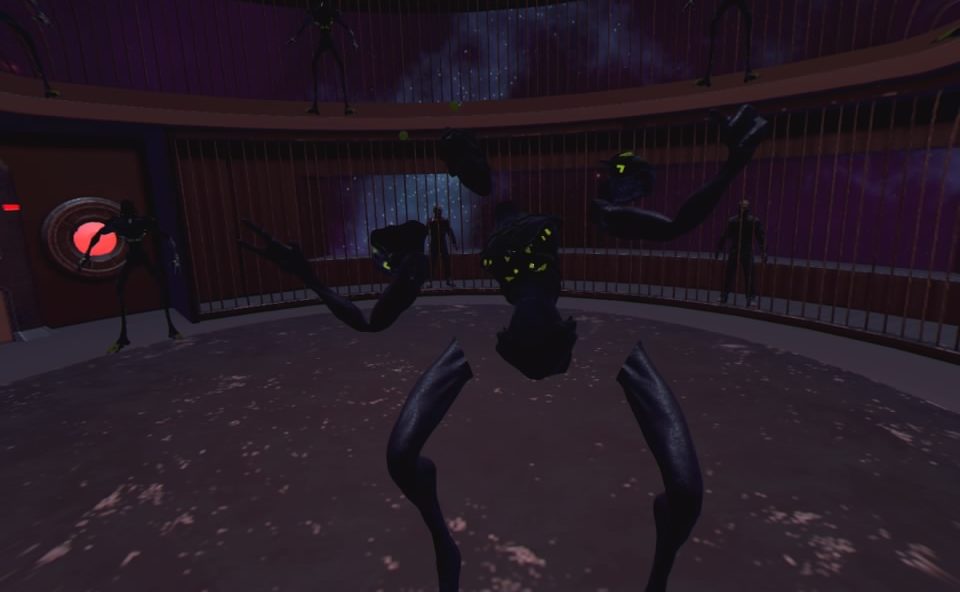
Finish Him! Boxing Apocalypse ultimately fails in every aspect I can judge a game by. I had some brief fun in the multiplayer but that’s mostly because me and a buddy were laughing at how broken the game is. The combat is uninspired and the whole game lacks any of the refinement of the other available fighting titles, including Drunken Bar Fight and at least that game knew what kind of game it was. This game takes itself way to seriously for what it’s bringing to the headset and just isn’t good.
What would I pay? I’d can’t recommend paying more then $5 for this game unless it gets some dramatic updates. The $20 asking price is nuts and even if it were to go on sale, just put that money toward Knockout League or Creed instead.
Gotham City Films provided The VR Grid with a review code for this title and, regardless of this review, we thank them for that!